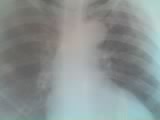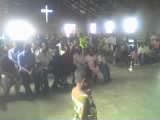dimanche 30 novembre 2014
Difficulty of Single Visit Approach for Colposcopy in Goma/DRC
The SGO (Society of Gynecologic Oncology) 2014 Annual Meeting was held in Tampa/Florida-USA from March 21-26, 2014 and Agir Ensemble/DRC was represented by Dr Mateus K. Sahani with an oral presentation related to colposcopy, a young service in DRC initiated at Hope Medical Center in Goma city. The attendance to this valuable meeting was supported by the U.S. NCI (National Cancer Institute), Center for Global Health and the SGO (Society of Gynecologic Oncology) and we would like to sincerely thank these organizations for their support which allowed us attending the meeting and present our work.
It was found that women who are totally healthy don’t come to colposcopy clinic because they are not aware of the program and they are not committed to pay for a service while not having any clinical sign that motivate them to consult the doctor/colposcopist.
The abstract presented is below:
Background and justification:
Cervical cancer is a major public health issue worldwide and particularly in Democratic Republic of Congo it is the first cause of death by cancer. Our colposcopy unit is too young (only 6 months of existence) and is the only one colposcopy center in the country. No woman could get access to cervical cancer screening before in whole the country and almost all women and other people don’t know much about cervical cancer screening. This study has objectives to inform more health professionals in our community and more donors and funders worldwide of the reasons of challenges for SVA for colposcopy in Goma.
Method:
We are performing cervical cancer screening at Hope Medical Center (HMC) and we have analyzed the feasibility of single visit approach for colposcopy during the screening. This is a descriptive and analytic study with data found from the screening procedure reports at HMC. Statistical test like comparison of percentages has been applied to analyze our data. From these 6 months we have screened 115 women, n=115. We have used EPI-INFO 6 software to analyze our data.
Results:
According to the age:
Age: 20-30 31-40 41-50 >50 Total
Number: 40 52 18 5 115
Percentage: 34.78% 45.22% 15.65% 4.35% 100%
When we compare these different percentages, there a significant difference and this means that there more women with precancerous lesions in the age group of 31-40 years old.
Among 115 women screened, we have found 31 (26.95%) women with precancer and 84 (73.04%) women with negative result. WHO has an estimate of 20.3%as reference cervical cancer prevalence in Democratic Republic of Congo. When we compare these 2 proportions, we find that the difference is not statistically significant. This to say that cervical cancer situation in this local community is the same as what was expected by WHO (X2 = 3.15 and p = 0.075972). Among the 31 women with positive results, 9 (29.03%) have CIN I, 17 (54.84%) have CIN II and 5 (16.13%) have CIN III. Those with CIN II and CIN III require treatment by excision (22 women).
Among the 22 women who require treatment, all of them didn’t accept to be treated at the first visit for many reasons:
1. To talk first with the husband before being treated: 7 (31.82%)
2. To look for money for the treatment: 13 (59.09%)
3. Need to think about it before accepting to be treated: 2 (9.09%)
When we compare these 3 proportions, we find that the difference is statistically significant and this means that more women are not ready to be treated at the first visit because of missing money for the treatment (X2 = 12.41; p = 0.002020).
Conclusions:
Almost all women are not ready to be treated at the first visit because of missing money (1st cause), involve the husband to the decision (2nd cause) and need to be convinced to accept treatment (3rd cause). It is very important that colposcopy program in Low and Middle Income Countries get financial supports from committed donors and funders to overcome the big challenge.
Inscription à :
Publier les commentaires (Atom)






















































































































Aucun commentaire:
Enregistrer un commentaire